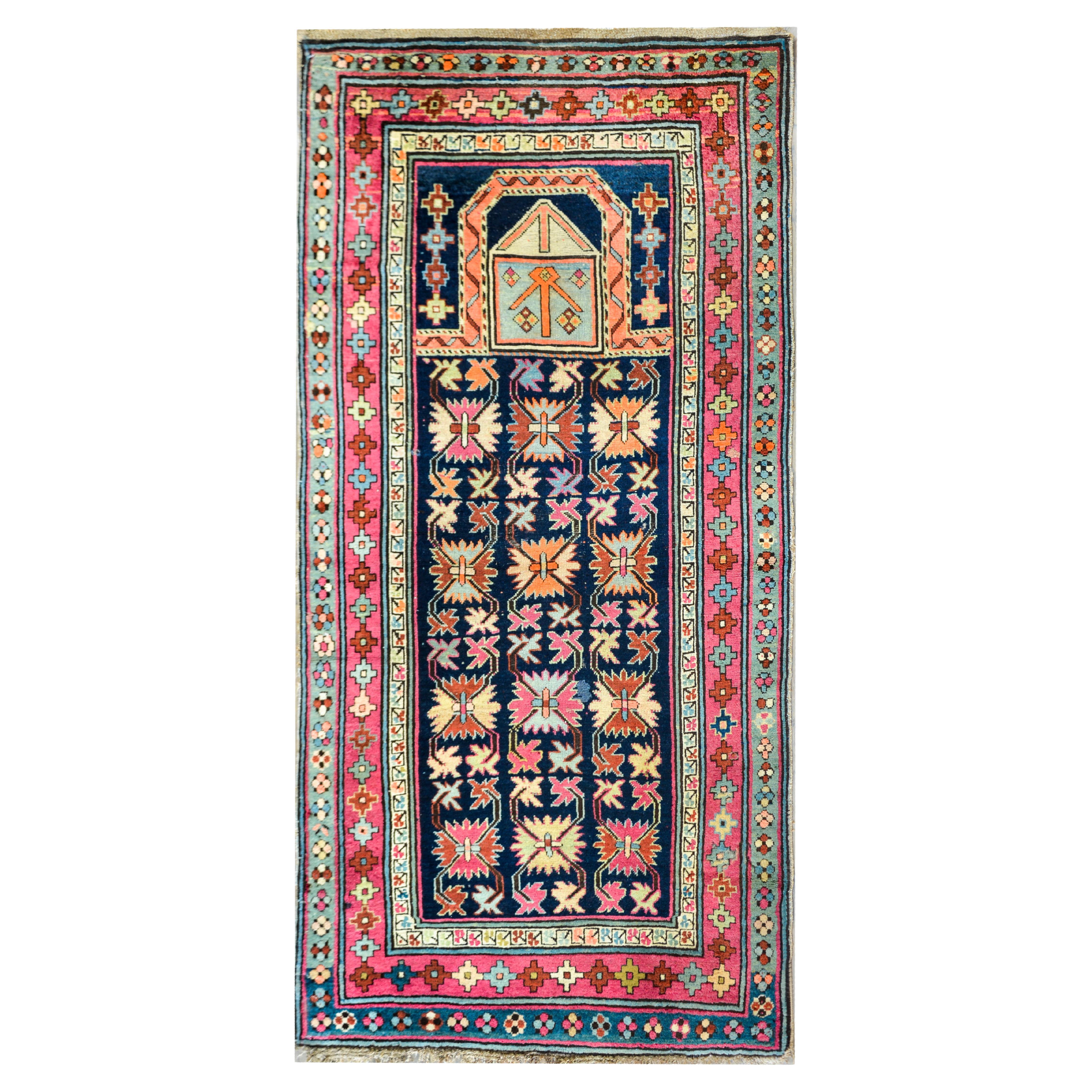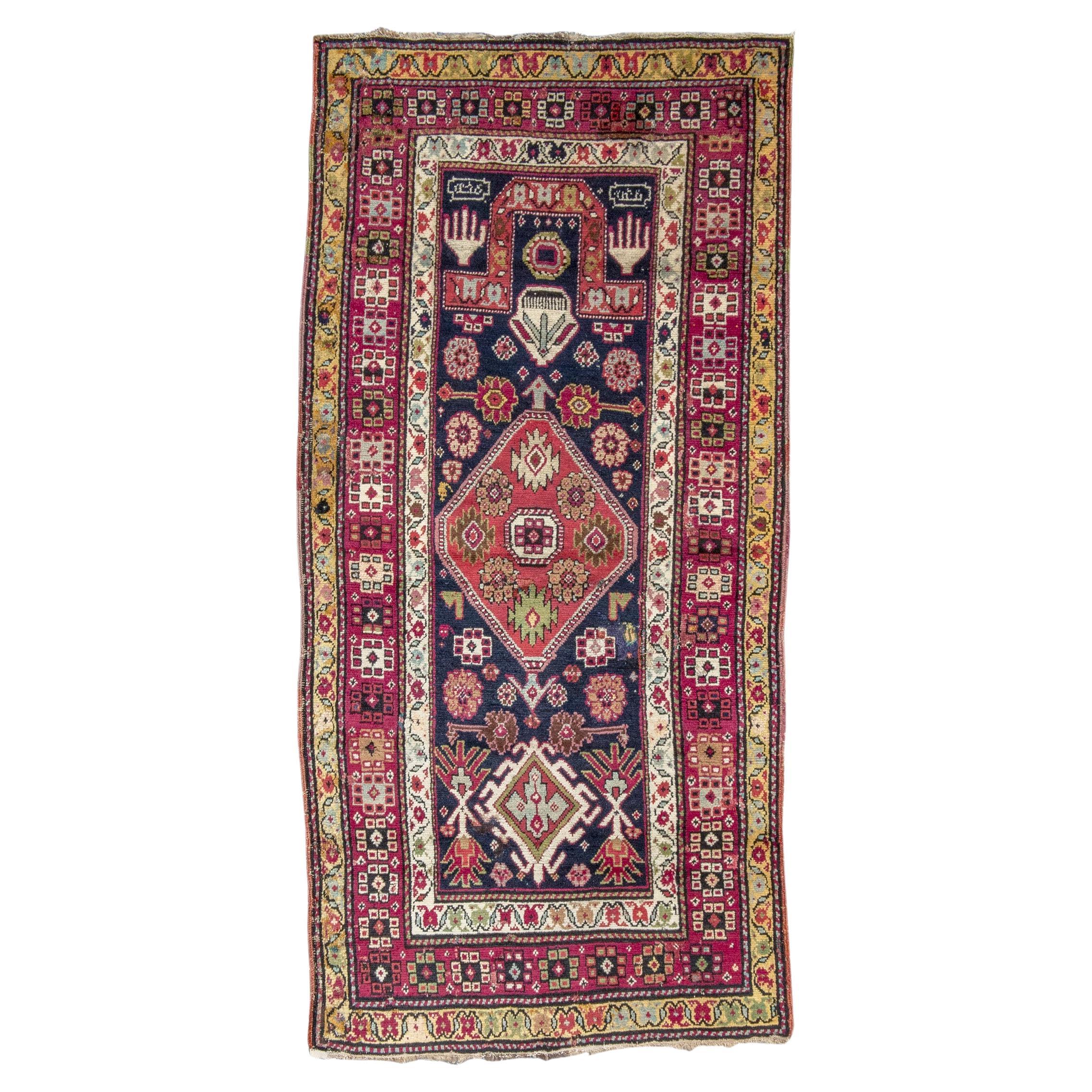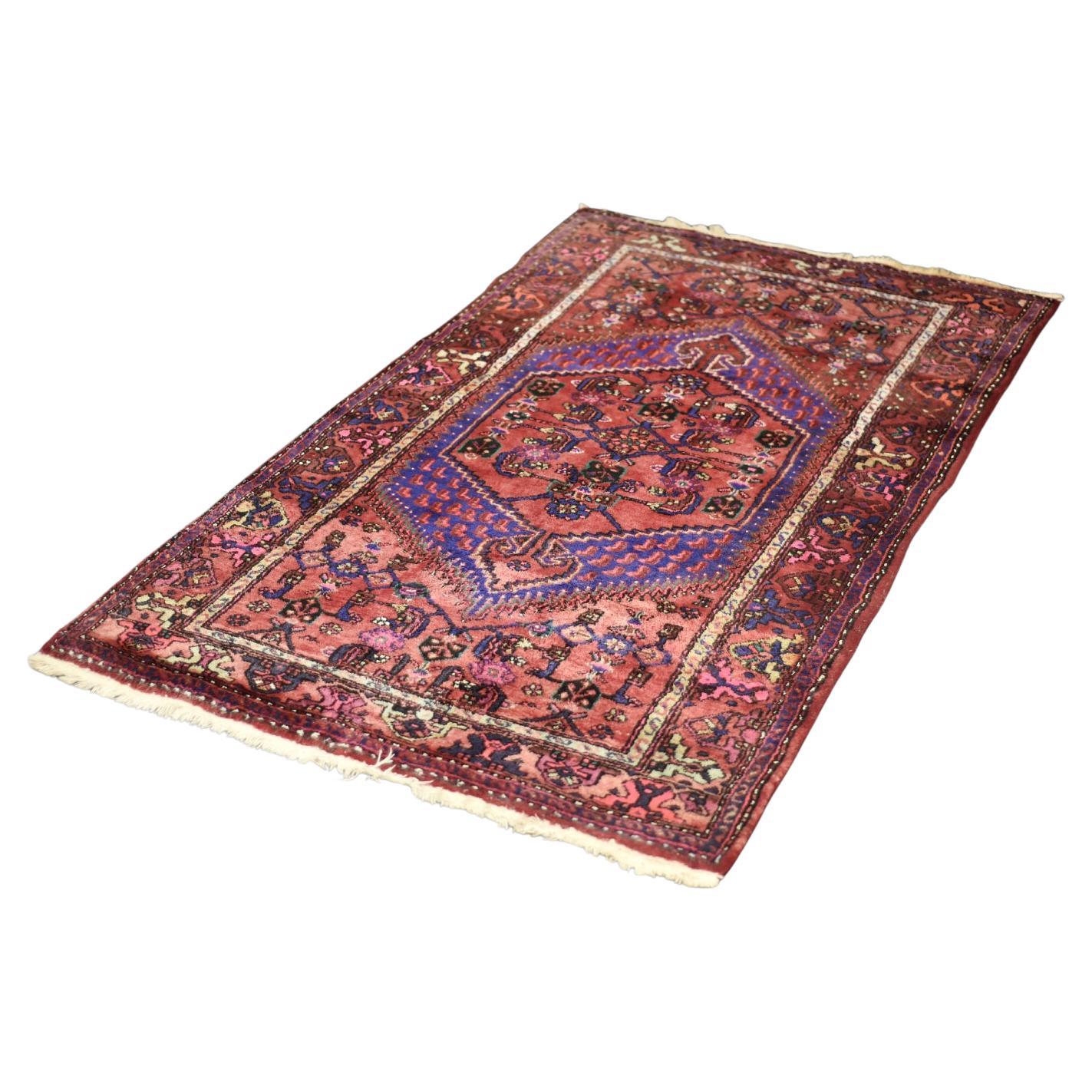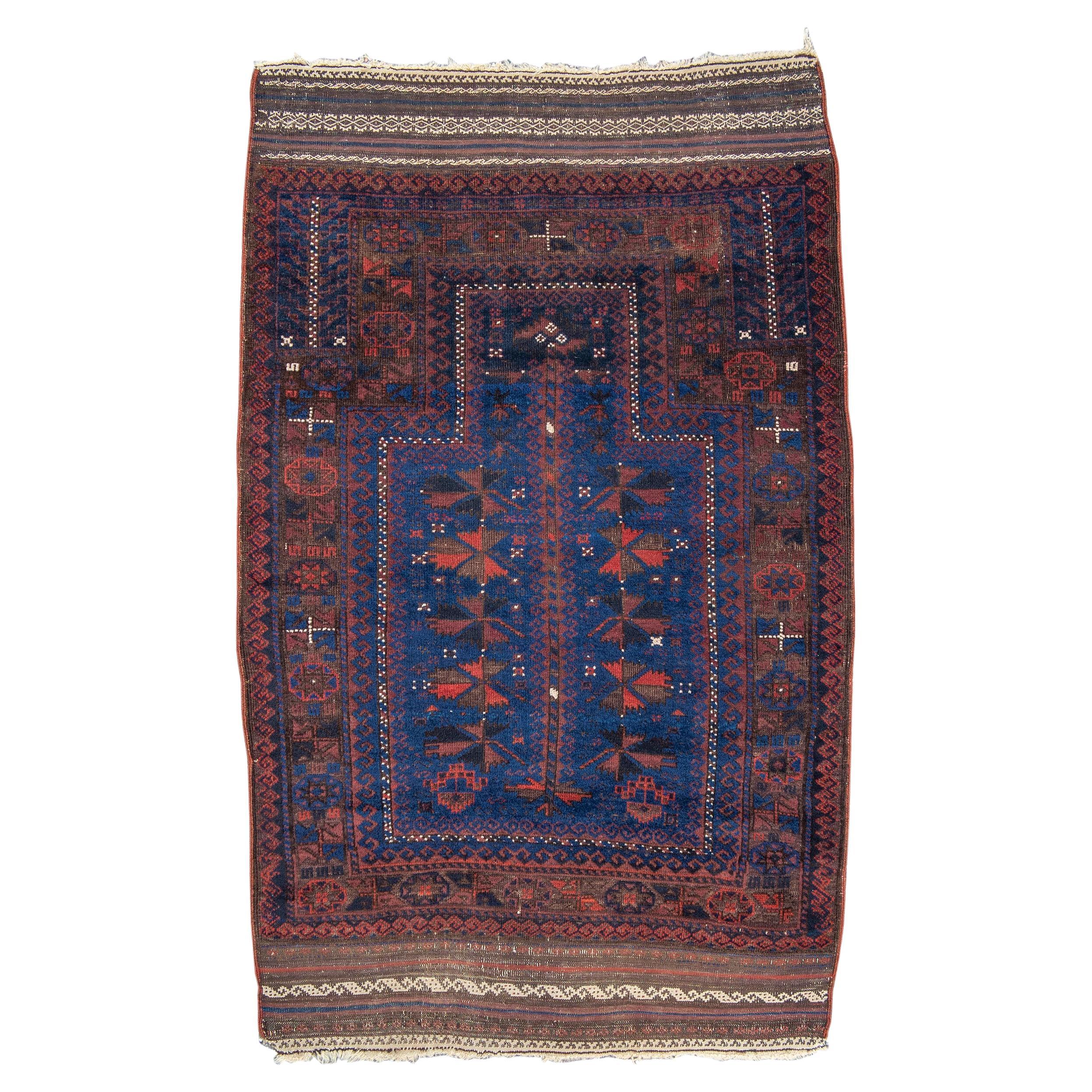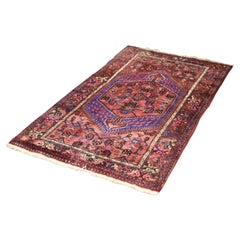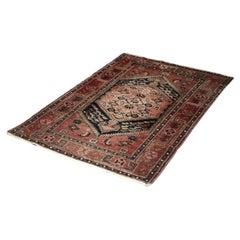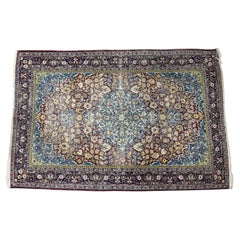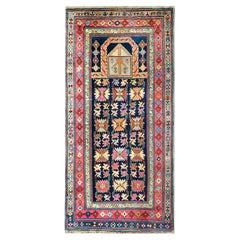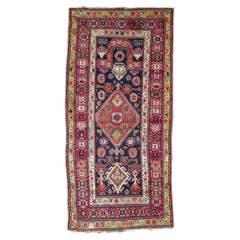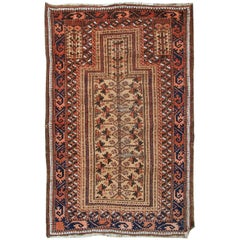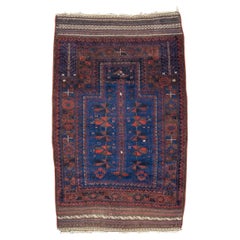Articles similaires à Vintage Hand-Woven Middle Eastern Oriental Baluch Prayer Rug, 1960s
Vous voulez plus d'images ou de vidéos ?
Demander au vendeur plus d'images ou de vidéos
1 sur 19
Vintage Hand-Woven Middle Eastern Oriental Baluch Prayer Rug, 1960s
1 469,85 €TVA incluse
À propos de cet article
This hand-woven Baluch prayer rug was made in Iran during the 1960s. Woven using a traditional technique called flat weaving, and dyed in shades of red, beige, blue, green and turquoise. This rug has a richly decorated, distinct pattern with a strongly accentuated mihrab in the central part.
Baluch prayer rugs are a type of rug that is made by the Baluch tribe, who inhabit the areas of eastern Iran, Afghanistan and western Pakistan. These rugs have distinctive features that distinguish them from other types of Persian rugs, especially in the context of prayer rugs. A key feature of Baluch prayer rugs is the presence of a mihrab, an arched pattern symbolizing a prayer niche that indicates the direction of Mecca's qibla. These rugs are often decorated with geometric motifs such as rhombuses, triangles, and stripes. The mihrab is usually surrounded by these geometric patterns. In addition to the mihrab, you can also find images of trees of life, stylized flowers and motifs referring to elements of nature and tribal life. The dominant colors are dark shades of red, brown, navy blue and black. White or cream accents are also often used. As with other traditional rugs, the colors are obtained from natural dyes, which gives Baluch rugs a deep and rich color scheme. These rugs are most often woven from wool, which is hand-spun. In some cases, goat wool is also used. The warp can be made of wool or cotton, which ensures the durability of the rug. The knot used in Baluch rugs is usually a symmetrical knot, the so-called Turkish knot. It makes the rugs dense and durable. The knot density is usually medium, which allows for the creation of clear but relatively simple patterns. These rugs are an expression of the Baluch tribal culture, reflecting their nomadic lifestyle and strong ties to Islamic traditions. They are valued for their authenticity, handcraft, and distinct style that is both functional and aesthetic. Baluch prayer rugs are primarily used for religious purposes. They serve as prayer mats on which believers kneel during prayer. In addition, due to their unique design and colors, they are also valued as decorative interior elements, can be hung on walls or placed on the floor in places of prayer or meditation. They are an example of the combination of tribal art with spiritual needs, while maintaining practicality and durability.
The rug is in original vintage condition. It has signs of wear due to its age. Minor losses on the flecce. Before shipping, the rug will be professionally cleaned and will be ready for use.
- Dimensions:Largeur : 91 cm (35,83 po)Longueur : 162 cm (63,78 po)
- Style:Autre (Dans le style de)
- Matériaux et techniques:
- Lieu d'origine:
- Période:
- Date de fabrication:circa 1960
- État:Usure conforme à l'âge et à l'utilisation. The rug is in original vintage condition. It has signs of wear due to its age. Minor losses on the flecce.
- Adresse du vendeur:Warszawa, PL
- Numéro de référence:1stDibs : LU6129245384582
À propos du vendeur
5,0
Vendeur Or
Vendeurs premium dont la note est supérieure à 4,3 et le délai de réponse de 24 heures maximum
Établi en 2010
Vendeur 1stDibs depuis 2021
51 ventes sur 1stDibs
Temps de réponse habituel : <1 heure
- ExpéditionRecherche du devis...Expédition depuis : Warszawa, Pologne
- Politique des retours
Certaines parties de cette page ont été traduites automatiquement. 1stDibs ne garantit pas l'exactitude des traductions. L'anglais est la langue par défaut de ce site web.
Garantie d'authenticité
Bien qu'il soit peu probable que la situation se présente, dans le cas où vous rencontreriez un problème d'authenticité d'un article, contactez-nous dans un délai d'un an pour obtenir un remboursement intégral. DétailsGarantie de remboursement
Si votre article n'est pas conforme à la description, est endommagé pendant le transport ou ne vous est pas livré, contactez-nous sous 7 jours pour obtenir un remboursement intégral. DétailsAnnulation sous 24 heures
Vous disposez d'un délai de 24 heures pour annuler votre achat sans motif.Des vendeurs professionnels agréés
Nos vendeurs de renommée mondiale doivent respecter des normes strictes en matière de service et de qualité, afin de préserver l'intégrité de nos fiches produit.Garantie d'alignement des prix
Si vous constatez qu'un autre vendeur a mis en vente le même article à un prix inférieur sur un autre site, nous nous alignerons sur ce prix.Livraison en toute confiance à l'international
Notre réseau de transporteurs de premier ordre propose des options d'expédition spécialisées dans le monde entier, y compris des livraisons personnalisées.Plus d'articles de ce vendeur
Tout afficherVintage Hand-Woven Middle Eastern Oriental Hamadan Rug, 1960s
This hand-woven oriental Hamadan rug was made in Iran during the 1960s. It is flat woven carpet - woven using traditional technique. This rug is dyed in shades of rustic red, pink an...
Catégorie
Vintage, années 1960, Perse, Autre, Tapis persian
Matériaux
Laine
Tapis vintage tissé à la main du Moyen-Orient oriental de Hamadan, années 1960
Ce tapis oriental noué à la main à Hamadan a été fabriqué en Iran dans les années 1960. Tissé à plat de manière traditionnelle et teint dans des tons de rouge rustique et de bleu ind...
Catégorie
Vintage, années 1960, Perse, Mid-Century Modern, Tapis persian
Matériaux
Laine
Tapis Kamse Hamadan oriental du Moyen-Orient tissé à la main, années 1960
Ce tapis tissé à la main en Perse occidentale provient de la région de Hamadan en Iran, à la périphérie du Kamse. Datant des années 1960, il est densément tissé à partir de poils de ...
Catégorie
Vintage, années 1960, Perse, Mid-Century Modern, Tapis persian
Matériaux
Laine
Vintage Hand-Woven Middle Eastern Oriental Isfahan Rug, 1940s
This hand-woven oriental Isfahan carpet was made in the city of Isfahan in central Iran, during the 1940s. It is naturally dyed in shades of deep red, blue and yellow. The colours in...
Catégorie
Vintage, années 1940, Perse, Autre, Tapis persian
Matériaux
Laine, Soie
Tapis vintage tissé à la main du Moyen-Orient oriental de Hamadan, années 1960
Ce tapis oriental Hamadan tissé à la main a été fabriqué en Iran dans les années 1960. Traditionnellement tissé à plat et teint à l'aide de colorants d'origine naturelle, ce tapis pr...
Catégorie
Vintage, années 1960, Perse, Autre, Tapis persian
Matériaux
Laine
Ancien tapis Heriz du Moyen-Orient tissé à la main, années 1920
Ce tapis antique tissé à la main a été noué en Perse (l'Iran d'aujourd'hui) dans les années 1920. La ville de Heriz est située au nord-ouest de l'Iran. Dans la ville et ses environs,...
Catégorie
Vintage, années 1920, Perse, Autre, Tapis persian
Matériaux
Laine, Coton
Suggestions
Rare tapis de prière persan Ganjeh du début du XXe siècle
Un magnifique et rare tapis de prière persan du début du 20e siècle, avec le plus beau motif stylisé de fleurs et de feuilles tissé dans de magnifiques roses, oranges, jaunes, bleus,...
Catégorie
Antiquités, Début des années 1900, Perse, Tribal, Tapis persian
Matériaux
Laine
Tapis ancien de prière persan Karabagh, 19e siècle
Ancien tapis de prière Karabagh, 19e siècle
Informations supplémentaires :
Dimensions : 5'9" L x 2'7" W.
Origine : Caucase
Période : 19ème siècle (4ème trimestre)
Tapis ID : 24098
Catégorie
Antiquités, XIXe siècle, Caucasien, Tapis du Caucase
Matériaux
Laine
Tapis de prière afghan ancien fait à la main, années 1900, 1C529
Ce tapis de prière NO AGE est en état d'origine, il présente quelques petites usures d'âge et une ancienne restauration au dos. Légère nuance de brun sur le champ et décorations roug...
Catégorie
Début du 20ème siècle, Afghan, Tapis d'Asie centrale
Matériaux
Laine
Ancien tapis de prière baloutche afghan, fin du 19e siècle
Ancien tapis de prière baloutche afghan, fin du 19e siècle
Tapis de prière à fond bleu au dessin spacieux, probablement originaire du nord-est de la Perse. La bordure primaire compl...
Catégorie
Antiquités, Fin du XIXe siècle, Afghan, Tapis d'Asie centrale
Matériaux
Laine
Tapis de prière Marashali - Fin du 19e siècle Tapis de prière Marasali
Fin du 19e siècle Tapis caucasien Prayer Marasali
Taille : 115 x 143 cm
Cet impressionnant tapis caucasien Marashali de la fin du XIXe siècle est un chef-d'œuvre reflétant l'artisan...
Catégorie
Antiquités, Fin du XIXe siècle, Caucasien, Tapis du Caucase
Matériaux
Laine
Tapis de prière antique Mucur ( Mudjar / Mujur) - Tapis turc d'Anatolie centrale
Il s'agit d'un ancien tapis Mucur d'Anatolie centrale, de la région de Kırsehir, avec un fond rouge, en bon état, et une belle composition de couleurs.
La ville de Mudjar (ou Mucur...
Catégorie
Début du 20ème siècle, Turc, Oushak, Tapis de Turquie
Matériaux
Laine, Fibre naturelle, Matériaux organiques
10 569 €
Livraison gratuite
